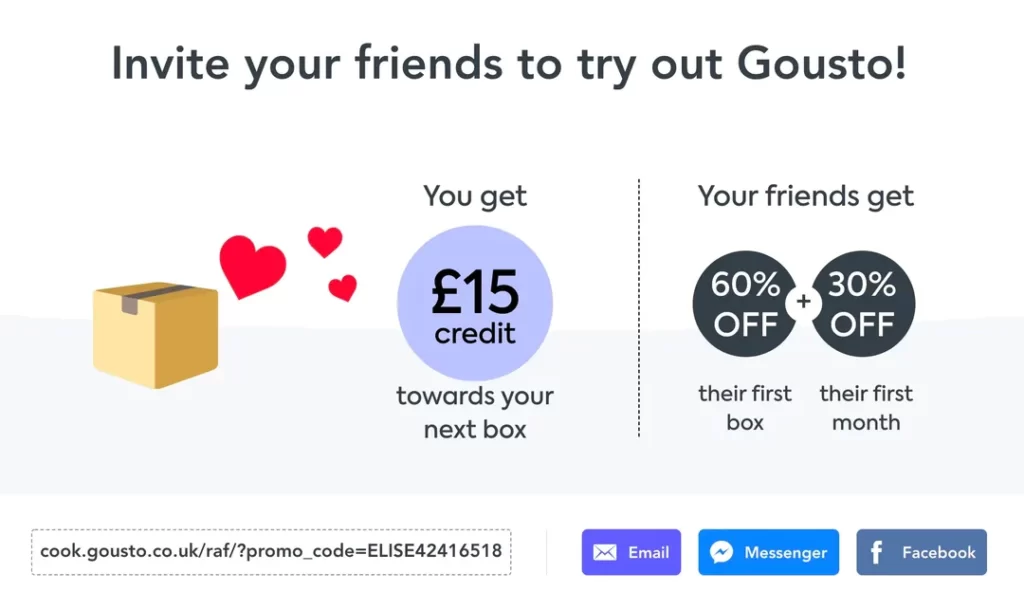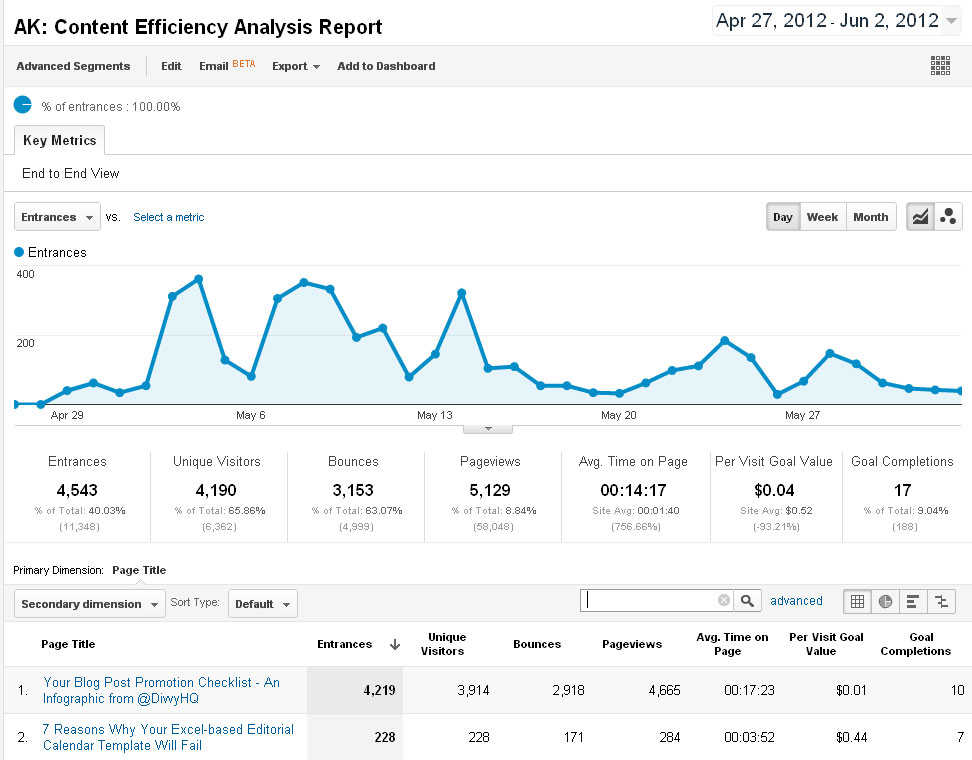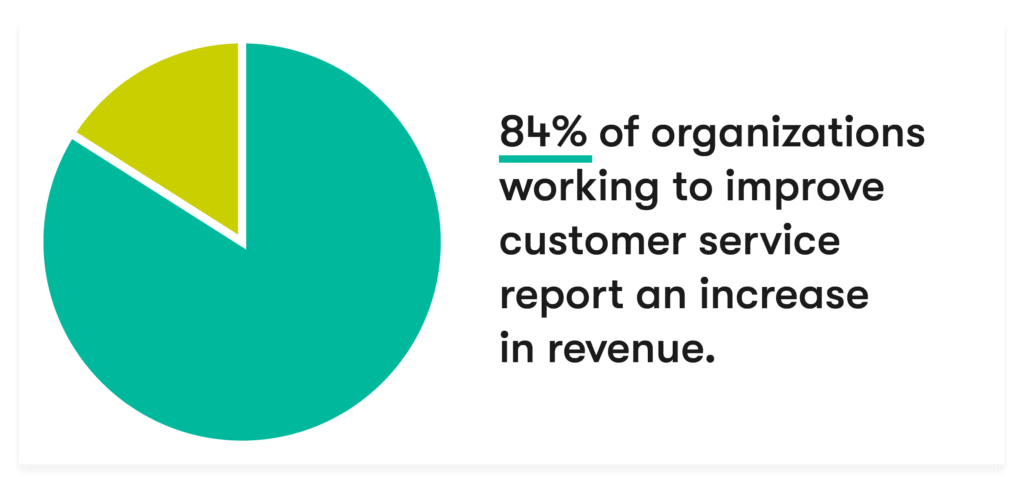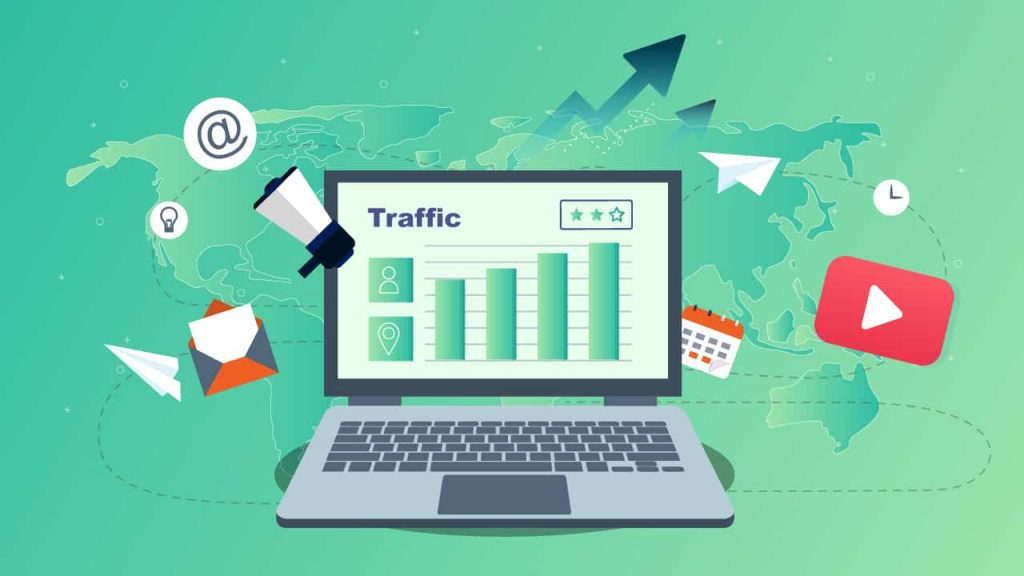How to Skyrocket Your Business Through Customer Referrals
Building solid customer relationships is more important than ever in today's hyper-competitive business landscape. One of the most effective ways to grow your business is through customer referrals. In this comprehensive guide, we'll discuss the power of customer referrals, why they matter, and how to create a successful referral program for your business. Let's dive in!
Table of Contents
The Power of Customer Referrals

Customer referrals can be a game-changer for your business. Here's why:
Trust and credibility
Trust and credibility are crucial factors influencing a customer's decision to choose your brand over your competitors. One of the most effective ways to build trust and credibility is through referrals from satisfied customers. When a customer recommends your product or service to someone they know, it reflects their trust in your brand and customer satisfaction with their experience.
Referrals from satisfied customers can be precious to your business. They are more likely to convert into paying customers because they have a pre-existing level of trust in your brand. This trust makes them more receptive to your marketing messages and more likely to purchase.
Additionally, client referrals can help to strengthen your brand reputation and increase your visibility within your target market. When satisfied customers speak highly of your brand, it can attract the attention of potential customers who may have yet to consider your product or service.
Cost-effective marketing
Businesses must focus on cost-effective marketing strategies to help them reach their target audience without breaking the bank. One such strategy is referral marketing, an effective way to acquire new customers at a much lower cost than traditional advertising methods.
Referral programs incentivise existing customers to refer their friends, family, and colleagues to your business. When a new customer signs up or purchases through the client referral link, the existing customer who made the referral is rewarded. This can be in the form of a discount, a free product, or another incentive.
Referral programs can be much more cost-effective than traditional advertising methods such as print, television, or online banner ads. The acquisition cost for each new customer is significantly lower because you leverage your existing customer base to market for you.
Moreover, referral marketing has the added benefit of being more targeted and personalised. The referrals come from people who know and trust your existing customers, making them more likely to convert into paying customers.
Increased customer lifetime value (CLV)

One of the critical benefits of referral marketing is the potential to increase the customer lifetime value (CLV) of the customers you acquire. CLV is the total amount of money a customer will spend on your products or services over their relationship with your brand. Customers acquired through referrals tend to have a higher CLV than those obtained through other methods, making them more valuable to your business in the long run.
The reason for this higher CLV is simple: customers referred to your brand are more likely to be satisfied with their initial purchase, leading to repeat purchases and increased loyalty. Since referrals come from people who know and trust your existing customers, there is a higher likelihood that these new customers will also become loyal advocates for your brand, referring their friends and family and leading to a cycle of continued growth.
Furthermore, because referred customers tend to have a higher level of trust in your brand from the start, they are more likely to make more significant purchases and be willing to pay a premium price for your products or services. This higher willingness to spend can result in higher revenue per customer, further increasing their overall CLV.
Creating a Successful Referral Program

Set Clear Goals and Objectives
Setting clear goals and objectives is essential when launching a successful referral program. Not only does it help you to focus your efforts and measure your success, but it also ensures that your program aligns with your overall business strategy. Here are some key factors to consider when setting your referral program goals and objectives.
Firstly, consider what you want to achieve with your referral program. Are you looking to increase sales, generate new leads, or improve customer retention? Defining your primary objective can tailor your program to meet those specific goals.
Secondly, consider how many new customers you want to acquire through your referral program. Setting a specific target can help you measure your program's success and track your progress towards achieving your goals.
Thirdly, establish your target customer acquisition cost (CAC). You are willing to spend this amount to acquire each new customer through your referral program. By setting a target CAC, you can ensure that your program remains cost-effective and provides a positive return on investment.
According to research, referral marketing can be a highly effective way to acquire new customers. Referred customers have a 16% higher lifetime value than customers acquired through other channels. Additionally, referral programs can result in a 69% faster time-to-close compared to other lead generation methods.
Develop a Compelling Offer
Developing a compelling offer is a critical component of a successful referral program. Your request must be attractive enough to motivate both the referrer and the referred to participate. Here are some popular options to consider when developing your referral program offer.
Discounts on future purchases are a common and compelling incentive to offer. By providing a discount to both the referrer and the referred, you can create a win-win situation that encourages customers to refer their friends and family. This type of offer not only incentivises the referrer to make a recommendation but also urges the directed to make a purchase.
Cash rewards are another popular incentive that can motivate both the referrer and the referred to participate in your referral program. You can incentivise your customers to refer their friends and family by offering a cash reward. This type of offer can be particularly effective if your customers are motivated by financial rewards.
Exclusive access to premium features is another option to consider. By providing exclusive access to premium features or content, you can create a sense of exclusivity that motivates customers to refer their friends and family. This offer can be particularly effective if you offer a subscription-based service.
Free products or services can also be an effective incentive for your referral program. By offering a free product or service to both the referrer and the referred, you can create an offer that provides immediate value to your customers. This type of offer can be particularly effective if your customers are already fans of your products or services.
According to research, referral programs with strong incentives can increase referral rates by up to 50%. Additionally, 83% of customers will refer friends and family to a business after a positive experience.
Make it Easy and Convenient.

When creating a successful referral program, making the process as easy and convenient as possible for your customers is crucial. Keeping the referral process simple and user-friendly can increase customers' likelihood of referring their friends and family. Here are some tips when making your referral program easy and convenient.
Firstly, make the referral process seamless by integrating it into your website or mobile app. Creating a dedicated referral page or section on your website makes it easy for your customers to find and participate in your program. Additionally, by integrating the referral process into your mobile app, you can provide a convenient way for your customers to refer their friends and family while on the go.
Secondly, allow customers to share their referral links through various channels like email, social media, and messaging apps. By providing multiple channels for sharing, you can increase the likelihood that your customers will refer their friends and family. Additionally, by making it easy for customers to share their referral links, you can create a sense of urgency and encourage immediate action.
According to research, a simple and user-friendly referral process can increase referral rates by up to 50%. Additionally, 92% of consumers trust recommendations from people they know, making referrals a powerful marketing tool for businesses.
Promote Your Referral Program
Promoting customer referral programs through a multi-channel approach is essential to its success. Customers need to know about your program to participate and refer their friends and family. Here are some effective channels to consider when promoting your referral program.
Email marketing is one of the most effective ways to promote your referral program. By sending targeted emails to your existing customers, you can inform them about your program and encourage them to participate. Additionally, by including a call-to-action and a clear explanation of the program's benefits, you can motivate your customers to refer their friends and family.
Social media is another powerful channel for promoting your customer referral programs. By sharing your schedule on your social media platforms, you can reach a wider audience and encourage engagement from your followers. Additionally, by using social media influencers to promote your program, you can tap into their existing audience and increase your program's visibility.
Blog posts and articles are another effective way to promote your referral program. Creating informative and engaging content highlighting your program's benefits can attract potential customers and encourage them to participate. Also, publishing your content on other websites and platforms can increase your program's reach and visibility.
In-app notifications are also a powerful tool for promoting your referral program. By sending notifications to your existing customers through your mobile app, you can inform them about your program and encourage them to participate. Additionally, you can increase engagement and referrals by providing a clear call-to-action and an easy way to experience.
According to research, a multi-channel approach to promoting your referral program can increase referral rates by up to 30%. Additionally, 83% of satisfied customers are willing to refer friends and family to a business, highlighting the potential of referral marketing as a growth strategy.
Monitor and Optimise

One of the best ways to grow your business is by leveraging the power of word-of-mouth marketing. By implementing a referral program, you can incentivise your existing customers to refer new customers to your business, helping you to acquire new customers at a lower cost.
However, more than simply setting up a referral program is required. It is essential to track its performance and make data-driven decisions to optimise it to ensure that it is effective and provides the best possible results. This will help you identify areas of improvement and make necessary adjustments to achieve better results.
There are several key performance indicators (KPIs) that you should consider when tracking the performance of your referral program. These include:
- Number of Referrals: The number of referrals your program generates is a crucial KPI to track. This will help you determine your program's effectiveness and whether it attracts new customers to your business.
- Conversion Rate of Referred Customers: Another important KPI is the conversion rate of referred customers. This measures the percentage of referred customers who purchase or take the desired action on your website. A high conversion rate indicates that your referral program targets the right audience and gives them a compelling reason to engage with your business.
- Customer Acquisition Cost (CAC): The customer acquisition cost measures the money you spend to acquire each new customer through your referral program. By calculating your CAC, you can determine whether your referral program is cost-effective and if there are opportunities to reduce costs.
- Return on Investment (ROI): Lastly, measuring the ROI of your referral program is critical to determine whether it is providing a positive return on investment. By comparing the revenue generated from the program to the cost of implementing and promoting it, you can determine whether it is worth continuing or if changes need to be made.
By regularly tracking these KPIs and making data-driven decisions to optimise your referral program, you can ensure that it remains an effective marketing tool for your business.
Implementing a Referral Program: Best Practices
Encourage Referrals at the Right Time
Asking for referrals can be a powerful way to acquire new customers for your business. However, the timing of your request can significantly impact its effectiveness. Choosing the right moment to ask for a referral is crucial to maximising the chances of success.
There are several opportune moments to ask for a referral from current customers. These include:
- After a Successful Purchase: One of the best times to ask for a referral is after a customer successfully purchases from your business. They will likely be cheerful and more willing to recommend your company to their friends and family. This is also an excellent time to offer incentives such as discounts or freebies to encourage them to refer others.
- When a Customer Leaves a Positive Review: Another opportune moment to ask for a referral is when a customer leaves online reviews of your business. This indicates that they are satisfied with their experience and may be willing to recommend your company to others. You can ask them if they would be willing to refer others to your business and provide the necessary tools to make it easy for them to do so.
- During a Customer Support Interaction: If a customer has had an issue with your product or service, resolving the problem quickly and satisfactorily can turn a potentially harmful experience into a positive one. In this situation, asking for a referral from the customer may be a good idea, as they are more likely to recommend your business to others after a positive customer support interaction.
In addition to these opportune moments, making the referral process as easy as possible for your customers is also essential. This can include providing them with pre-written referral emails, social media posts or links, and other tools to make it easy for them to share your business with their network.
By choosing the right moment to ask for a referral and providing the necessary tools to make it easy for customers to refer others, you can maximise the effectiveness of your referral program and drive more new customers to your business.
Provide Excellent Customer Service

Customer service plays a critical role in the success of any referral program. Satisfied customers are more likely to refer your business to others, which can help you acquire new customers and grow your business. To ensure that your customers are satisfied with their experience, it is essential always to provide outstanding customer service.
Here are a few ways you can ensure your customers are satisfied and more likely to refer others:
- Respond Promptly to Inquiries and Concerns: One of the most important aspects of good customer service is responding promptly to inquiries and concerns. Customers want to feel heard and valued, and a quick response can help alleviate their problems and build trust in your business. Whether responding to an email, a phone call, or a message on social media, make sure you respond as quickly as possible.
- Resolve Issues in a Timely and Efficient Manner: When a customer has an issue with your product or service, it is vital to address it quickly and efficiently. Take the time to listen to their concerns and work with them to find a solution that meets their needs. A quick resolution can turn a potentially harmful experience into a positive one and build customer loyalty.
- Go the Extra Mile to Exceed Customer Expectations: Exceptional customer service goes beyond resolving issues. Going the extra mile to exceed customer expectations can help build strong relationships with your customers and make them more likely to refer others to your business. This can include personalised recommendations, surprise discounts, or other gestures that show you value their business.
By providing outstanding customer service, you can ensure that your customers are satisfied with their experience and are more likely to refer others to your business. This can help you acquire new customers at a lower cost and build a strong foundation for a successful referral program. Remember, every interaction with a customer is an opportunity to build a relationship and create a loyal customer who will refer others to your business.
Leverage Social Proof
Social proof can be a powerful marketing tool for businesses looking to build trust and credibility with their audience. By leveraging positive social proof, you can showcase your happy customers and increase the likelihood that potential customers will trust your brand. Here are a few ways you can leverage social proof to build trust and attract new customers:
- Share Customer Testimonials and Reviews: One of the most effective ways to showcase positive social proof is by sharing customer testimonials and reviews. This can be done on your website, social media channels, or other marketing materials. Highlighting positive feedback from satisfied customers can help build trust and credibility with potential customers, who are more likely to trust the opinions of their peers.
- Feature User-Generated Content: Another way to leverage social proof is by featuring user-generated content on your website and social media channels. This can include photos and videos of customers using your product or service, reviews, and testimonials on social media. By showcasing this content, you can demonstrate that your customers are happy with your product or service and encourage others to try it out.
- Highlight Case Studies of Successful Customer Experiences: Case studies can be a powerful way to demonstrate the value of your product or service and build trust with potential customers. By highlighting successful customer experiences, you can show how your product or service has helped others achieve their goals and solve their problems. This can be particularly effective for businesses that offer B2B services, where potential customers may be looking for evidence of successful outcomes.
Incorporating social proof into your marketing strategy can help build trust and credibility with your audience, making it more likely that they will consider your business when purchasing. By showcasing your happy customers and their favourable experiences with your product or service, you can attract new customers and build a loyal following for your brand.
Examples of Successful Referral Programs

- Dropbox: Their referral program offers additional storage space for the referrer and the referred, contributing significantly to their rapid growth.
- Uber: The ride-sharing giant offers ride credits to both parties, encouraging users to refer friends and family members.
- Airbnb: Their referral program provides travel credits for both the referrer and the referred, incentivising users to spread the word about the platform.
Tools and Platforms for Managing Referral Programs
To streamline your referral program, consider using tools and platforms that offer features like referral tracking, reward management, and analytics. Some popular options include:
- ReferralCandy
- Yotpo
- Ambassador
- Post Affiliate Pro
The Impact of Customer Referrals on SEO and Online Visibility

Customer referrals boost your sales and increase your online visibility and search engine optimisation (SEO). Here's how:
Increased website traffic
An essential goal for any website is to increase its traffic. One of the best ways to do this is by having referral links that direct visitors to your site. Referral links are placed on other websites and social media platforms, leading people to your website.
As more people visit your website through referral links, overall website traffic will likely increase. This increase in traffic can positively impact your search engine rankings. Search engines such as Google, Bing, and Yahoo consider website traffic a significant factor when ranking websites in search results.
When your website has high traffic, search engines recognise that your website has valuable content that is relevant to the audience, improving your website's visibility and ranking. Search engines use algorithms to evaluate the relevance and popularity of a website based on different factors, such as the quality of content, user experience, and backlinks.
Furthermore, having a high-traffic website can increase visitor engagement and interaction. Visitors are more likely to engage with your website and share your content when they discover it through referral links. As more people engage with your website, the chances of sharing it with others through word of mouth or social media platforms increase. This can lead to more referral links and traffic, creating a positive growth cycle for your website.
More backlinks
Backlinks are links from other websites that point to your website. They are an essential factor that search engines use to evaluate the popularity and authority of a website. When other websites link to your website, they consider your content valuable and relevant, positively impacting your search engine rankings.
One way to generate backlinks is through customer referral links. If customers share their referral links on their websites or blogs, it can generate valuable backlinks to your website. This is because the referral links usually include a link to your website, and when people click on these links, they are directed to your site.
Having more backlinks from high-quality websites can improve your domain authority, a metric used to measure the credibility and trustworthiness of a website. Search engines use domain authority to evaluate the overall quality of a website, and high domain authority can improve your search engine rankings.
It is essential to note that not all backlinks are equal. Backlinks from reputable websites in your industry are more valuable than backlinks from low-quality or irrelevant websites. Therefore, generating backlinks from authoritative websites is crucial to improve your search engine rankings.
In addition to generating backlinks, referral links can increase your brand's visibility. When customers share their referral links, it exposes your brand to new audiences who may have yet to be aware of your products or services. This can increase brand awareness, resulting in more traffic and sales.
To generate more backlinks through customer referral links, it is essential to have a referral program in place. A referral program incentivises customers to share their referral links by offering rewards such as discounts or free products. This can encourage customers to share their links and increase the chances of generating backlinks to your website.
Increased social media engagement

Social media platforms such as Facebook, Twitter, Instagram, and LinkedIn allow businesses to connect with their audience, promote their products or services, and build their brand.
One way to leverage social media is by using customer referral links. When customers share their referral links on social media, it can increase engagement, such as likes, shares, and comments, boosting your online presence and visibility.
Social media engagement is a metric that measures how much people interact with your content on social media platforms. When people engage with your content, it shows that they find it interesting, valuable, or entertaining. Social media algorithms prioritise content that generates high engagement, which means that the more engagement your content receives, the more likely it is to be seen by more people.
By encouraging customers to share their referral links on social media, businesses can tap into their customers' social networks, reaching a wider audience and potentially attracting new customers. Social media engagement generated from referral links can also provide social proof, an important factor influencing buying decisions. Seeing that others have engaged with your content can increase their trust and confidence in your brand.
In addition to increasing engagement, referral links shared on social media can increase website traffic. When people click on the referral links shared on social media, they are directed to your website, which can result in more traffic and potential sales.
It is vital to have a solid social media presence to maximise the benefits of social media engagement from customer referral links. This includes:
- Regularly posting high-quality content that is relevant and valuable to your audience.
- Engaging with your followers.
- Optimising your social media profiles.
Measuring the Success of Your Referral Program
To determine the effectiveness of your referral program, track critical metrics and analyse the data. Some important metrics include the following:
- Referral rate: The number of customers participating in your referral program divided by your total customer base.
- Conversion rate: The percentage of referred leads who become paying customers.
- Customer acquisition cost (CAC): The total cost of acquiring a new customer through your referral program.
- Return on investment (ROI): The revenue generated through your referral program compared to the cost of running the program.
Conclusion
In conclusion, customer referrals are a powerful way to grow your business, build trust, and establish long-lasting customer relationships. By implementing a successful referral program, you can tap into the potential of your existing customers to acquire new ones while maintaining a cost-effective marketing strategy. By following the best practices and tips outlined in this guide, you'll be well on your way to creating a referral program that skyrockets your business's growth and success.
